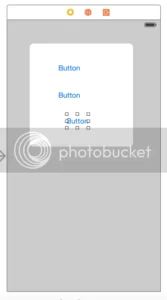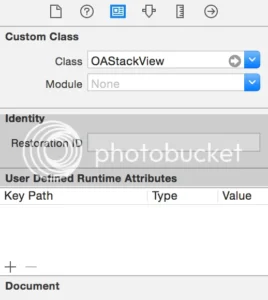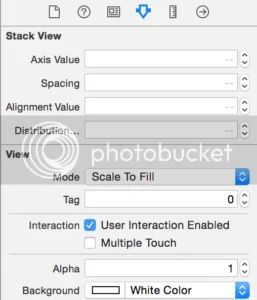- July 30, 2025
- Mins Read
iOS 9 introduced the very cool UIStackView, UIStackView can be used to easily create simple and complex layouts.
As expected UIStackView can only be used for iOS 9 and up. This project tries to port back the stackview to iOS 7+.
OAStackView aims at replicating all the features in UIStackView
Usage
To run the example project, clone the repo, and run pod install from the Example directory first.
Since OAStackView mimics the interface of UIStackView, the usage of OAStackView is similar to UIStackView.
OAStackView Can be either used from the Interface builder, or from code.
Interface Builder
Drag a a UIView into your view controller, and add some views to it.

Change the class to OAStackView

(Optional) Change the stack Axis (set Axis Value to 0 for Horizontal or 1 for Vertical), Spacing, Alignment or distribution.

Run the project!

From Code
To use OAStackView from code, Please refer to UIStackView for proper documentation.
As a quick example on its usage do the following:
Create a couple of views to be stacked:
UILabel *l1 = [[UILabel alloc] init];
l1.text = @”Label 1″;
UILabel *l2 = [[UILabel alloc] init];
l2.text = @”Label 2″;
Create the stack view passing the array of views:
OAStackView *stackView = [[OAStackView alloc] initWithArrangedSubviews:@[l1, l2]];
stackView.translatesAutoresizingMaskIntoConstraints = NO;
Add the stack view to self.view
[self.view addSubview:stackView];
[self.view addConstraints:[NSLayoutConstraint constraintsWithVisualFormat:@”V:|-30-[stackView]”
options:0
metrics:0
views:NSDictionaryOfVariableBindings(stackView)]];
[self.view addConstraints:[NSLayoutConstraint constraintsWithVisualFormat:@”H:|-10-[stackView]”
options:0
metrics:0
views:NSDictionaryOfVariableBindings(stackView)]];
Installation
OAStackView is available through CocoaPods. To install it, simply add the following line to your Podfile:
pod “OAStackView”
Tests
Since OAStackView has been built from reverse engineering UIStackView, and since I intend to keep updating and refactoring OAStackView, tests was one of the requirements going forward.
The following a human readable text subscript (generated with specipy).
Contribution
All contributions in any form are welcomed, if you find the project helpful, and you want to contribute then please do.
Known Issues, and future improvements
Missing functionality
OAStackView implements most of the features from UIStackView except the following:
-
baselineRelativeArrangement@property(nonatomic,getter=isBaselineRelativeArrangement) BOOL baselineRelativeArrangement;
-
layoutMarginsRelativeArrangement@property(nonatomic,getter=isLayoutMarginsRelativeArrangement) BOOL layoutMarginsRelativeArrangement;
UIStackViewDistribution is also partially implemented (2 elements out of 5 are still not implemented)
-
UIStackViewDistributionFill -
UIStackViewDistributionFillEqually -
UIStackViewDistributionFillProportionally -
UIStackViewDistributionEqualSpacing -
UIStackViewDistributionEqualCentering
Please refer to UIStackView for proper documentation.
Future improvements
The following would be nice to have for future versions
- Covering the remaining functionality from
UIStackView - Better Documentation
- Better test coverage for some edge cases
- Rewrite in swift, or more swift friendly
GitHub
- July 30, 2025
- Uncategorized
PermissionsSwiftUI displays and handles permissions in SwiftUI. It is largely inspired by SPPermissions. The UI is highly customizable and resembles an Apple style. ...
- July 30, 2025
- SwiftUI
Introduction PagerTabStripView is the first pager view built in pure SwiftUI. It provides a component to create interactive pager views ...
- July 29, 2025
- Swift Learning
- SwiftUI
1. Taking Action When a Property Changes: Property Observers Swift lets you observe and respond to changes in a property’s ...




